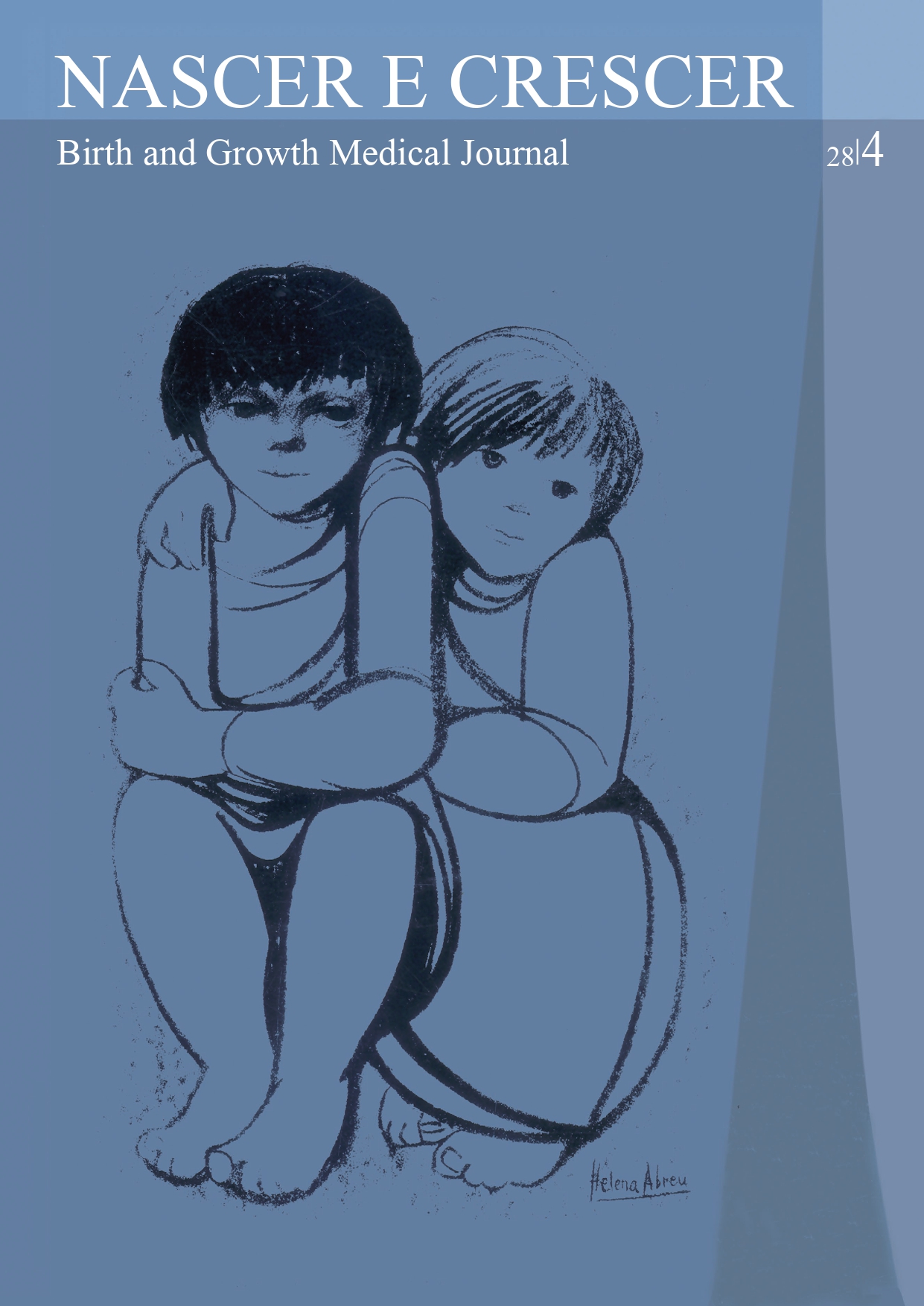Physical exercise and leg pain - What is the relationship?
DOI:
https://doi.org/10.25753/BirthGrowthMJ.v28.i4.15161Keywords:
exercise, overuse, shin splint, stress fracture, tibial stress syndromeAbstract
Shin splint, also known as tibial stress syndrome, results from an underlying stress reaction of the tibia caused by overuse. The patient typically refers a diffuse pain along the anteromedial side of the tibia, which is worse in late afternoon and associated with over-exercising days.
Diagnosis is confirmed by a prototypical history and physical examination findings. Radiological evaluation assists in differential diagnosis. Treatment consists of adequately resting or changing training routines, together with analgesic drugs.
Herein is presented the case of an adolescent referred to our Pediatric Rheumatology Unit with diffuse pain in the right pretibial region due to intensive exercise. Laboratory study and imaging exams were unremarkable. Clinical improvement following reduced exercise intensity supported diagnosis.
Downloads
References
2. Wilder R, Sethi S. Overuse injuries: tendinopathies, stress fractures, compartment syndrome, and shin splints. Clin Sports Med. 2004; 23:55-81.
3. Pengel K. Common Overuse Injuries in the Young Athlete. Pediatr Ann. 2014; 43:297-308.
4. Sando J, McCambridge T. Nontraumatic Sports Injuries to the Lower Extremity. Clin Pediatr Emerg Med. 2013; 14:327-39.
5. Korsh J, Matijakovich D, Gatt C. Adolescent Shin Pain. Pediatr Ann. 2017; 46:e29-e32.
6. Edama M, Onishi H, Kubo M, Takabayashi T, Yokoyama E, Inai T, et al. Gender diferences of muscle and crural fascia origins in relation to the occurrence of medial tibial stress syndrome. Scand J Med Sci Sports. 2017; 27:203-8.
7. Reshef N, Guelich D. Medial Tibial Stress Syndrome. Clin Sports Med. 2012; 31:273-90.
8. Feldman J, Bowman E, Phillips B, Weinlein J. Tibial Stress Fractures in Athletes. Orthop Clin N Am. 2016; 47:733-41.
9. Franklyn M, Oakes B. Aetiology and mechanisms of injury in medial tibial stress syndrome: current and future developments. World J Orthop. 2015; 6:577-89.
10. Williamson B, Arthur C. Shin-splints: Common exercise-related syndromes affecting the lower leg. J R Nav Med Serv. 2014; 100:272-6.
Downloads
Published
How to Cite
Issue
Section
License
Copyright and Authors' Rights
All articles published in Nascer e Crescer - Birth and Growth Medical Journal are Open Access and comply with the requirements of funding agencies or academic institutions. For use by third parties, Nascer e Crescer - Birth and Growth Medical Journal adheres to the terms of the Creative Commons License "Attribution - Non-Commercial Use (CC-BY-NC)".
It is the author's responsibility to obtain permission to reproduce figures, tables, etc. from other publications.
Authors must submit a Conflict of Interest statement and an Authorship Form with the submission of the article. An e-mail will be sent to the corresponding author confirming receipt of the manuscript.
Authors are permitted to make their articles available in repositories at their home institutions, provided that they always indicate where the articles were published and adhere to the terms of the Creative Commons license.


